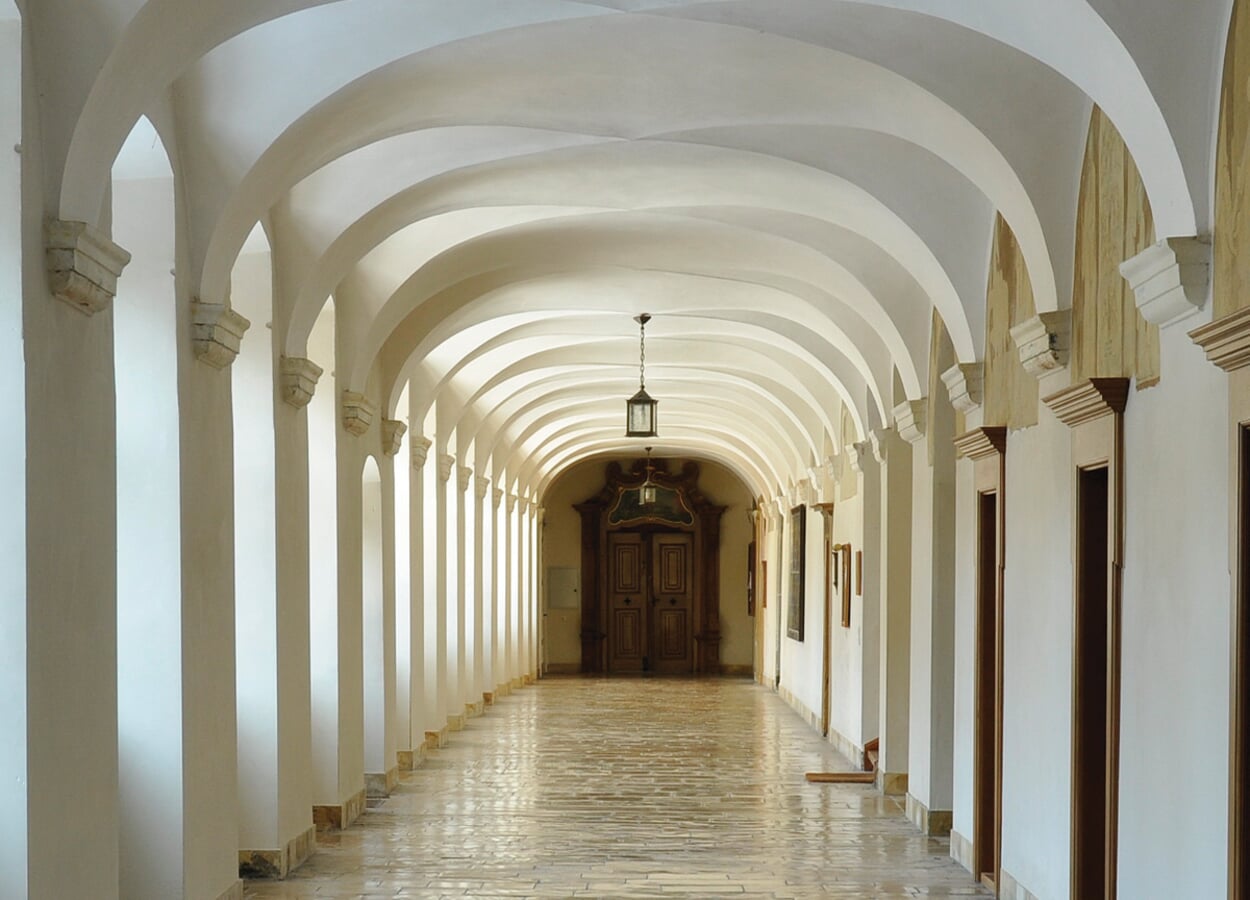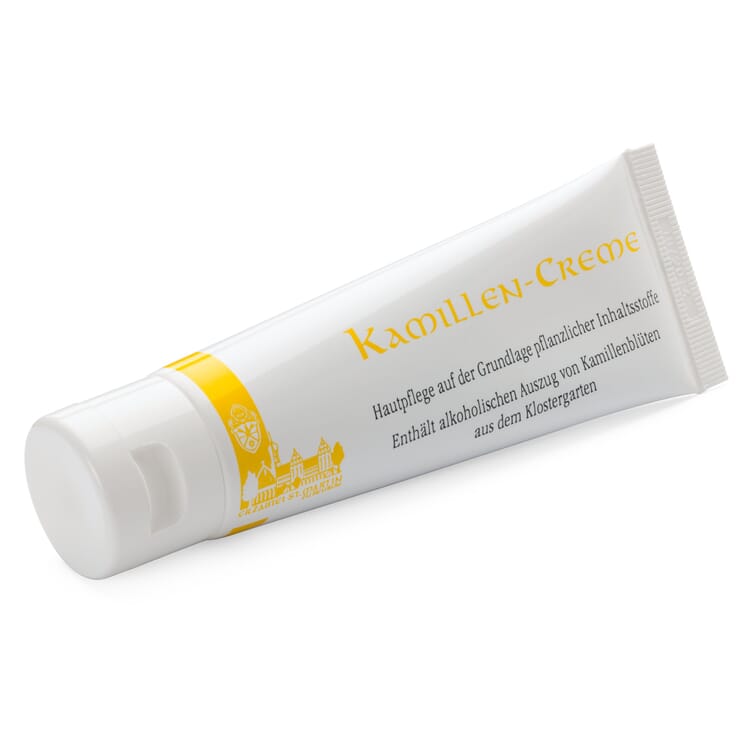- 900 years of Klosterneuburg Abbey
- Abbey St Severin
- Benedictine Monastery Chantelle
- Benedictine Monastery Beuron
- Floral art
- Damascus steel
- The Grieser Klosteranger
- Kartäuser
- Ceramics from Maria Laach
- Kloster Neustift
- Königsmünster Monastery Bakery
- Monastery apiary
- Monastic work
- Food from Plankstetten
- Provencal olive oils
- Wines from Pforta Monastery
Gutes aus Klöstern
The Benedictines in the monastery of St. Martin at Beuron


A small river, or even a stronger stream, accompanies the railroad line from Sigmaringen to the west, and this inconspicuous body of water, which can at best be navigated in paddle boats, is the first section of the proud and famous Danube, the river that connects central and southeastern Europe, the European river par excellence. The Swabian Danube valley is picturesque, invites you to hike and to discover an ancient cultural landscape where time seems to have stopped a bit. And while you look out of the window of the regional train, still with the imposing impression of Sigmaringen Castle in front of your mind's eye, after a few kilometers a train station appears in a place where you would hardly have suspected it: Beuron Station. And in this particularly remote spot of the Danube valley there is a monastery that has a very special sound in the history of Benedictine monasticism: the Archabbey of St. Martin. A monastery with its own station, then, because apart from the extensive monastery complex one discovers only a few other houses in this hamlet. On old photographs one can see that a hundred years ago it was even more lonely there, but even measured by today's concepts of loneliness and remoteness, Beuron certainly achieves a value between 8 and 9 on a fictitious scale of 1 to 10. A famous monastery on a famous river, that is the Archabbey of Beuron, the place of which master monastery gardener Brother Felix says with conviction that it is a privilege to live there. In any case, the landscape already proves him right, the silence all around, the wooded rocks, and also the ensemble of the monastery buildings themselves, the church.
A long history until the new beginning
Judging by the time monks have already lived at this site, the Benedictines have not been there all that long. It was not until 1863 that they were able to settle in Beuron. Before that, the abbey had stood empty for 60 years, having been abolished in the course of secularization in 1803. Until then, Augustinian monks had lived there since the 11th century, and when they dispersed to the four winds because of the politics of the time, they left behind a complete, functional monastery with relatively young buildings, because only in the Baroque period everything had been renewed and furnished in the taste of the time. Not all monasteries that were secularized were as lucky as Beuron and ended up in good hands. It became the property of Prince Hohenzollern-Sigmaringen, who did not turn the monastery rooms into barns and cattle sheds, but preserved them essentially in their original form.


And then, in the history of Beuron, one of the fascinating basic constellations occurred, in which an idea or a dream comes to maturity and the protagonists are in the right place at the right time. In the middle of the 19th century, Benedictianism in Germany was as good as extinct. Only in Bavaria were there tentative new beginnings, but Beuron belonged to Prussia at the time and was still in a waiting position. And it was precisely in this waiting position that two monks in Rome, the brothers Maurus and Placidus Wolter, who came from Bonn, were imbued with the idea of opening up a new approach to the original monastic life. They already had a model: it was the Abbey of Solesmes on the Sarthe, which was still young at that time because it had been repopulated in 1833. Solesmes, too, was already about 800 years old and suddenly proved to be one of the nuclei of the Benedictine Renaissance in Europe. Beuron was to become another nucleus. After the Wolter brothers had searched in vain for monastic possibilities in their hometown of Bonn, they came into contact with Princess Catherine of Hohenzollern-Sigmaringen in Rome, and she made it possible for a new monastic life to begin in Beuron in 1863, this time with Benedictine monks. They still had to pass a test in the Kulturkampf, and it seems almost comical that some monks disguised as servants of the princess were able to survive this time on the spot. However, finally, the new foundation on the Danube succeeded from scratch and became the starting point of many other monasteries in Germany, Austria and the Czech Republic.
In the sign of tradition, at the height of time
What happened in Beuron was literally in the air at that time, which was socially and politically characterized by materialistic thinking, positivism and profane belief in progress. But intellectual life had been seething for some time, and Romanticism had given a foretaste of the phenomena that were to break out in art and poetry at the beginning of the 20th century. Recourse in content and form to antiquity was just as much a part of this as the design of the living space as a total work of art. And it cannot be surprising if this also played a role with the Benedictines. In Beuron it was about living monasticism in a renewed way on a classical basis. But the forms of expression developed quite avant-garde, were on the height of the time or even ahead of it. Obviously, there, in the remote valley of the Danube, there was an ideal condition to let the arts flourish, namely the magic and momentum of the new beginning.In the liturgy, one sang the Gregorian chant newly discovered in Solesmes, and so Beuron became the center for chant in Germany at that time.


And the fine arts, painting and goldsmith's art became formative for Beuron - initiated by Father Desiderius Peter Lenz, who had already worked as a sculptor before entering the monastery. He was fascinated by the austerity and hieratic expressiveness of Egyptian art with its strict symmetry and flatness. It was precisely this that seemed suitable to him for artistically transferring the intention of the monks with their striving for austerity and seriousness to rooms, pictures and objects of liturgical and monastic use. Other artists found their way to Beuron and became monks, among them the Dutch painter Willibrord Verkade. The Beuron School of Art became the sacred art avant-garde with international impact. The art historian Hubert Krins, today's curator of the fascinating Beuron Art Archive, points out that hardly any other modern art school existed for so long - from 1870 to 1930.
Stimulating lightness, seriousness and devotion
"Studio of the soul", this term borrowed from the art historian Timothy Verdon also fits well to the Archabbey of Beuron. Such a studio has really come into being there - inside as well as outside. Much else besides the Beuron School of Art could also flourish in spiritual and material culture, especially in theology. The archabbot of Beuron, Tutilo Burger, is realistic when he states that today the forces for such diverse creativity are perhaps no longer so extensive with the decreasing number of monks. Nevertheless, Beuron is far from being a museum of its own history. A stately convent lives there with manifold tasks. Theological and philological research is still carried out at a high level, and the Beuroner Kunstverlag publishes one of the most important theological journals in Germany, "Erbe & Auftrag". The daily life of the monks takes place in spaces that carry the tension between baroque allegory and Beuron symbolism. The abbot puts it briefly: "Fascinating between love of light and brightness in the Baroque and monastic austerity in the Beuron style, inspiring lightness, seriousness and devotion." The latter certainly animated the new founders of Beuron and can still be found and gained in this place today. Martin Erdmann





